The Need for a Crisis Response Architect and Curator
I have been truly amazed, though not surprised, at how hundreds of associations have pulled together rapid-response information, updates, teachings, and even town halls for their members (and in many cases nonmembers) in the face of this current moment of upheaval. Founded to be the voice of their represented industry, the professional home and advocate for their professionals and companies alike, associations are a source of strength when so much is in flux. Yet, functioning in rapid-response mode without attention to structure and experience runs the risk of diminishing the value our organizations can provide.
We know that more is not always better – our members don’t come to our organizations because of the quantity of content and information we can provide, per se – but because of the quality we are able to easily identify, surface, and craft into applicable templates. If Google can produce millions of pages of sites and information for a key search term, our associations shine when they serve just as page one – that which is most essential.
In the face of this moment, I see Covid-19 response pages that, each day, have more and more content and resources added to them. While the filter of latest-breaking news is one factor in priority, it should not be the only. I have spoken with CEO’s about what has proven most valuable and when we went to look at it, it took scrolling and searching to find it – and in some cases, new, less relevant information has pushed it out completely.
Yes, we need staff and leaders with their ears to the ground and their eyes to the horizon – bringing in that which is emerging. I posit you ALSO need someone whose job it is to architect and curate how these resources are provided on an ongoing basis. Some guiding questions that they can use to help could be:
What are the categories of information, resources, and solutions that we are providing, and how are we structuring our digital hub so that a user can quickly go to the category they want (association news, world news, in-time templates and resources, virtual learning opportunities, etc)?
How are we tracking which resources we provide are the highest value? The most viewed? The most used? Making the biggest impact in real time? How do we make sure these don’t slip below the surface?
The California Landscape Contractors Association drafted a template letter for their members to use when encountering officials who weren’t sure if they work qualified as essential under the latest executive order – and placed it as an open template in the side bar so it wouldn’t get lost and could be copy/pasted out
If there are resources and approaches we create or curate that have wide-spread appeal or use, are we weekly seeing what rises to the top and proactively sending that out to our members?
For the learning, town hall, and virtual community experiences we are creating – are we conducting pop-up feedback loops before/after each to ensure the formats we are using are meeting end user need.
I was with one organization who had a town hall of 350 mental health professionals on zoom – the purpose was to give them space to connect and discuss how they were handling a virtual practice, and because of the numbers only 9 voices were heard and none of them had their questions/concerns discussed by their peers.
Our members, our communities, need the information, guidance, and solution that our organizations are creating. Yet, if our answer to how to access those key pieces of value becomes “It’s on the hub page,” without thought to how easy it is to find and access on that page, our ability to make impact will diminish in kind.
So turn to a colleague – ask them, what are top 3-5 things that our members need at this moment – and then go for your own digital scavenger hunt – are they easy to find? In formats that are easy to use? If not, you too need a crisis response architect and curator.
